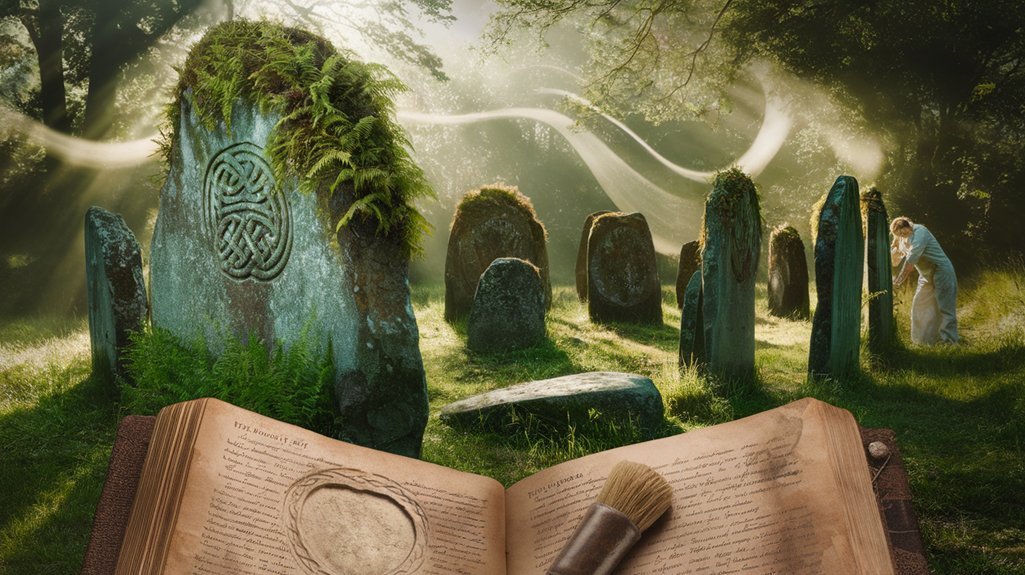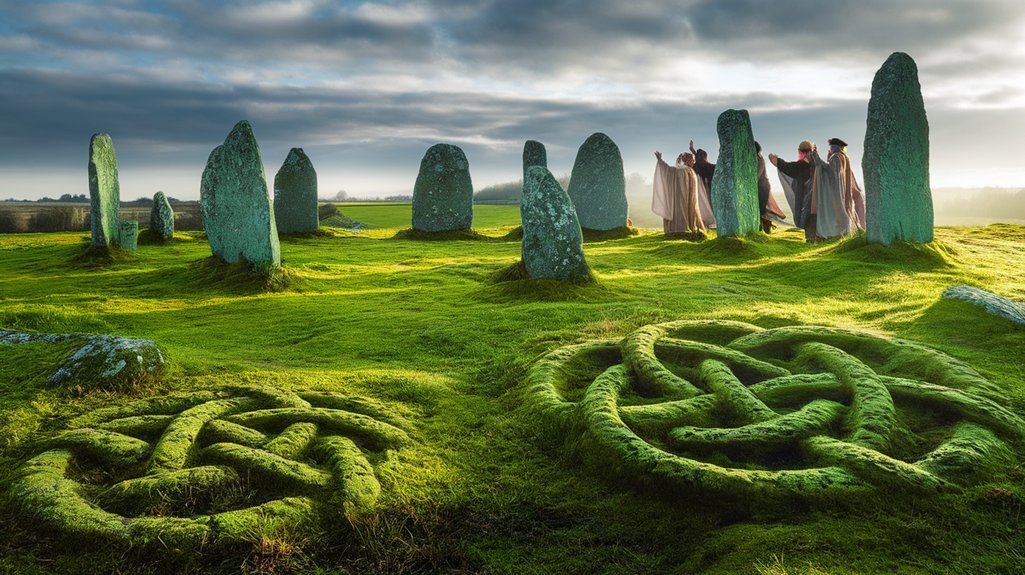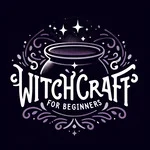As an Amazon Associate I earn from qualifying purchases.
Imagine a tapestry woven with threads of ancient wisdom and vibrant folklore, each strand representing a piece of Ireland's mystical past. Celtic Reconstructionism offers a bridge to this enchanting world, where you can explore how historical texts and archaeological insights breathe life into age-old customs. By examining these elements, you'll uncover how modern practitioners celebrate Ireland's spiritual heritage, inviting you to consider the relevance of these traditions in today's society.
Key Takeaways
- Celtic Reconstructionism focuses on historical accuracy and cultural authenticity in reviving ancient Celtic spiritual practices.
- It emphasizes studying archaeological findings, historical texts, and folklore for accurate cultural reconstruction.
- Seasonal festivals like Samhain and Beltane are central to connecting with the spiritual world of the Celts.
- Irish mythology, with its gods and legendary heroes, plays a significant role in these practices.
- Modern rituals inspired by Celtic traditions foster community cohesion and connection to nature.
The Roots of Celtic Reconstructionism

Although many modern spiritual movements trace their origins to ancient traditions, Celtic Reconstructionism stands out for its dedication to historical accuracy and cultural authenticity. As you delve into Celtic spirituality, you'll discover that it's rooted in the ancient customs of the Celts, a diverse group of tribes spread across Europe, particularly in Ireland. This movement doesn't just borrow loosely from the past; instead, it seeks to faithfully revive the spiritual practices and beliefs that defined Celtic life.
You'll find that Celtic Reconstructionists meticulously study archaeological findings, historical texts, and folklore to reconstruct the spiritual framework of the Celts. They emphasize understanding the seasonal festivals, such as Samhain and Beltane, which were integral to Celtic spirituality. By practicing these ancient customs, Reconstructionists aim to forge a direct connection to the spiritual world of the Celts, fostering a deeper appreciation for both history and tradition within a modern context.
Uncovering Ireland's Mythological Tapestry
Ireland's mythological tapestry is a rich and intricate weave of stories, gods, and legendary heroes that have captivated imaginations for centuries. Delving into this tapestry, you encounter mythical creatures like the Selkies, who transform from seals to humans, or the formidable Banshee, a harbinger of death. These beings aren't just figments of fantasy; they embody cultural values and fears deeply rooted in Irish tradition.
Ancient rituals played a pivotal role in this mythological framework, connecting the physical and spiritual realms. The Druidic ceremonies, for instance, were more than mystical observances; they were conduits for divine communication, reinforcing the social fabric. As you explore these legends, you uncover layers of meaning that reflect the complexities of human experience and interaction with the natural world. Understanding these narratives offers you a glimpse into a past where symbolism and storytelling were vital to the Irish identity.
The Role of Historical Texts and Archaeology

Exploring Ireland's mythological narrative requires a deep dive into historical texts and archaeological findings, which serve as vital keys to understanding the past. When you examine these texts, you're not just reading stories; you're seeking historical accuracy in the myths and legends that have shaped Irish culture. Manuscripts like the "Lebor Gabála Érenn" provide insights into Ireland's early history and mythic origins. However, interpreting these texts demands a careful balance between legend and documented history.
On the archaeological front, discoveries such as ancient burial sites and artifacts offer tangible evidence of the past. These findings often corroborate or challenge the stories found in historical texts. As you analyze these archaeological findings, they reveal layers of cultural and religious practices that have evolved over centuries. By integrating both textual and archaeological evidence, you gain a fuller picture of Ireland's rich, mystical landscape and its historical roots.
Folklore and Its Influence on Modern Practices
When you delve into the realm of Irish folklore, you find a vibrant tapestry of stories that continue to shape modern practices and cultural expressions. These folklore stories are not just relics of the past; they're alive, influencing today's cultural symbolism and rituals. By examining these tales, you notice the impact they have on festivals, art, and even personal beliefs.
For instance, consider the table below highlighting key folklore elements and their modern influences:
| Folklore Element | Modern Practice | Cultural Symbolism |
|---|---|---|
| Banshee | Haunted house tours | Warning of death |
| Leprechaun | St. Patrick's Day events | Luck and trickery |
| Samhain | Halloween celebrations | Connection to spirits |
| Tuatha Dé Danann | Fantasy literature | Supernatural ancestry |
| Selkies | Coastal art installations | Transformation and love |
Understanding these connections helps you appreciate how folklore stories persist, weaving the old world into the fabric of today's life.
Embracing a Living Tradition in Today's World

As you recognize the enduring influence of folklore on cultural practices, you begin to see how Celtic traditions remain vibrant and relevant in today's world. By embracing these living traditions, you engage with the past in a meaningful way, nurturing a sense of identity and continuity. Community engagement plays a crucial role in this process, as groups gather to celebrate and reinterpret ancient customs, ensuring their survival and evolution.
Modern rituals, inspired by old Celtic practices, offer a renewed connection to nature and spirituality, allowing you to integrate these elements into your daily life. They provide a framework for personal growth and community cohesion, bridging the gap between ancient wisdom and contemporary needs. By participating in these rituals, you contribute to a dynamic cultural tapestry, illustrating how traditions can adapt while maintaining their core essence. This journey of rediscovery enriches your understanding and appreciation of Ireland's mystical heritage.
Frequently Asked Questions
How Does Celtic Reconstructionism Differ From Other Modern Pagan Paths?
You'll find Celtic Reconstructionism emphasizes historical accuracy and spiritual authenticity more than other modern pagan paths. It's about reviving ancient practices with precision, not just inspiration, ensuring a deeper connection to the past and genuine spiritual experience.
What Are Some Key Symbols in Celtic Spirituality?
Like a tapestry woven with meaning, Celtic spirituality's key symbols include the triple spiral, tree of life, and Celtic knot. You'll also find the spiral dance, ogham script, and water symbolism, each representing interconnectedness and transformation.
How Do Practitioners Celebrate Traditional Celtic Festivals Today?
You celebrate traditional Celtic festivals by engaging in Samhain rituals for honoring ancestors, lighting Beltane bonfires to signify renewal, making Imbolc offerings to welcome spring, and participating in Lughnasadh harvests to appreciate abundance and community.
Can Celtic Reconstructionism Be Practiced Outside of Ireland?
When in Rome, do as the Romans do. You can practice Celtic Reconstructionism anywhere. Cultural adaptation allows you to integrate it into your local customs, fostering a global community that honors Ireland's rich heritage beyond its borders.
What Languages Are Important for Studying Celtic Reconstructionism?
To study Celtic Reconstructionism effectively, you'll need a solid grasp of Gaelic linguistics, especially Old Irish. Understanding these languages helps you access primary sources, revealing deeper insights into Ireland's mystical traditions and cultural nuances.
Conclusion
In embracing Celtic Reconstructionism, you're not just scratching the surface of Ireland's mystical past—you're diving headfirst into a vibrant, living tradition. With historical texts, archaeological findings, and folklore as your compass, you navigate the intricate tapestry of ancient customs. By participating in this cultural revival, you ensure these traditions aren't just relics under glass but dynamic practices that resonate today. This journey not only honors the past but also breathes new life into it for future generations.
Amazon and the Amazon logo are trademarks of Amazon.com, Inc, or its affiliates.


